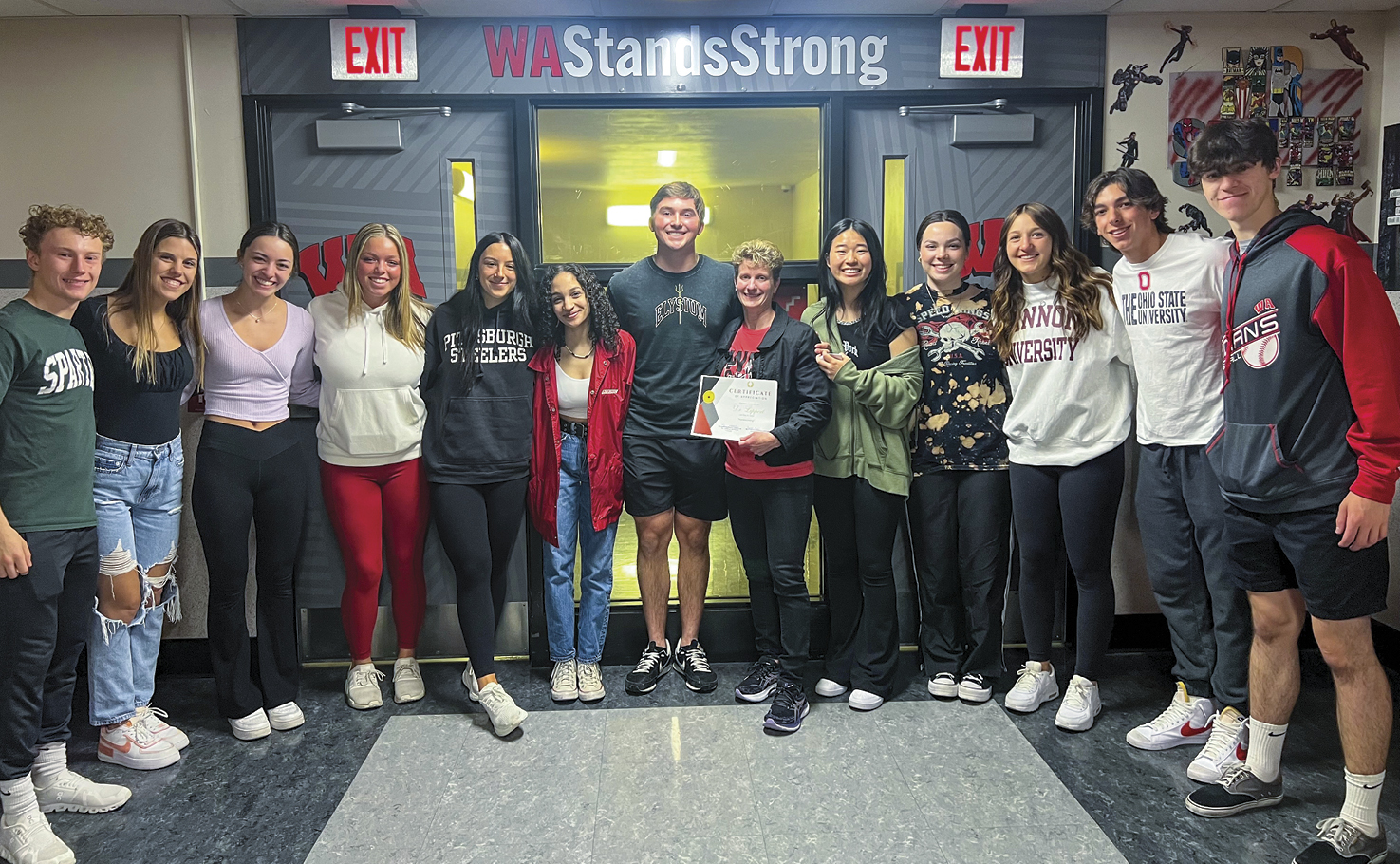Equity Drives Mission for Early College in High School
August 01, 2023
Appears in August 2023: School Administrator.
AASA Learning 2025 Lighthouse Demonstration System: WEST ALLEGHENY SCHOOL DISTRICT

Imagine graduating from high school with two associate college degrees and an offer of admission to the U.S. Air Force Academy in Colorado Springs, Colo.
A recent high school graduate did just that, one illustrative example of how the West Allegheny School District in western Pennsylvania has extended its early college initiative to good effect. The district’s ambitious Early College in High School Academy, launched in 2018, led to its designation as an AASA Lighthouse System.
West Allegheny’s 3,365 student population is 88 percent white with students of color comprising about 10 percent. Nearly 70 percent of its graduates traditionally go on to some form of postsecondary education.
Those numbers weren’t good enough for Jerri Lynn Lippert, West Allegheny superintendent, who has led the district since 2014 after serving as chief academic officer for the Pittsburgh Public Schools for 11 years. Lippert wanted to make sure all students, regardless of financial means or family history in higher education, saw a way forward, whether it was training for a specific trade or more traditional academic studies. She needed a program driver.
“The primary motivation is equity and removing barriers for students,” Lippert says. “One of the biggest struggles is making the transition from high school to postsecondary. The most vulnerable will have even more significant difficulties.”
Multiple Pathways
West Allegheny’s Early College in High School Academy, a partnership between the district and the region’s higher education institutions, essentially offers a K-14/16 college and career pathway. Students can explore a wide variety of choices among the 28 programs, including early childhood education, welding, cybersecurity, business administration, multimedia game simulation, engineering, general studies, nursing, and air traffic control to name a few.
Students can participate in dual enrollment by spending the morning in high school, with the district transporting them to a local college campus for the afternoon, or they can choose concurrent enrollment. The latter means high school teachers provide college-level courses at the high school, alongside traditional AP classes. During the past school year, about 11 students took the former route, and another 668 took the latter.
As Lippert says, “We believe in creating multiple pathways to postsecondary access early while in high school, depending on the students’ interests.”
High school teachers who were running college-level courses were given affiliate professor status at the respective colleges. The early college academy’s students earn college credits from their respective postsecondary institution and are considered enrolled as long as they maintain eligibility criteria.
College faculty work with the high school teachers to maintain the expectations for performance at the postsecondary level. ”No one benefits from a college-level course with lowered rigor,” Lippert says, noting that her school’s students are developing study skills to succeed in postsecondary classes.
West Allegheny students involved in the early-college program work closely with five guidance counselors “to understand the nuances of the program, scheduling, and (to) connect them to the college,” the high school’s academic principal, Katharine Roche, says. “It helps them understand what it means to be a student at college or technical program.”
Just as significant, she adds, is ensuring those students pursuing the dual enrollment track have “people in place at those institutions who understand the goal and offer support at the higher education partnerships. … It’s not unusual for our students to be first-generation [college students].”
To ensure students succeed in their college studies, they receive follow-ups and check-ins both midquarter and midsemester.
“My eyes are on schedules and performance and looking at transcripts,” Roche says. “It helps our students determine if this is the right path for them. One student finished the quarter and decided that wasn’t the path to continue. Our messaging is that that’s not a failure. It’s better to know you don’t want to do it.”
Removing Barriers
To make it financially accessible for all students, the school district negotiated discounted college tuition rates and pays for college credits for historically underserved students or those whose families are experiencing financial hardship.
“The whole community is benefiting from the tuition program,” Lippert says. “When you remove barriers for historically underserved students, all students benefit.”
To date, close to 68 percent of West Allegheny’s 985 high school students are taking an early-college course, with the district looking to expand its partnerships with other local colleges and universities beyond the existing five.
While the district does not currently track its graduates’ college matriculation rates, the anecdotal reports are encouraging.
Jump starting their post-high school pursuits has made a discernible difference. “I have received feedback from many students and families that have all shared they felt more prepared than their classmates after completing our courses,” Roche says. “Additionally, we have also heard that our students are able to use their scholarship/financial aid funds to continue beyond their undergraduate degree (for their masters’ degree).”
MERRI ROSENBERG is a freelance education writer in Ardsley, N.Y.
Author
Roster of Lighthouses
To read the full list of Lighthouse school systems being featured in this series and learn more about becoming a demonstration district, visit aasa.org/learning2025.
Advertisement
Advertisement
Advertisement
Advertisement




